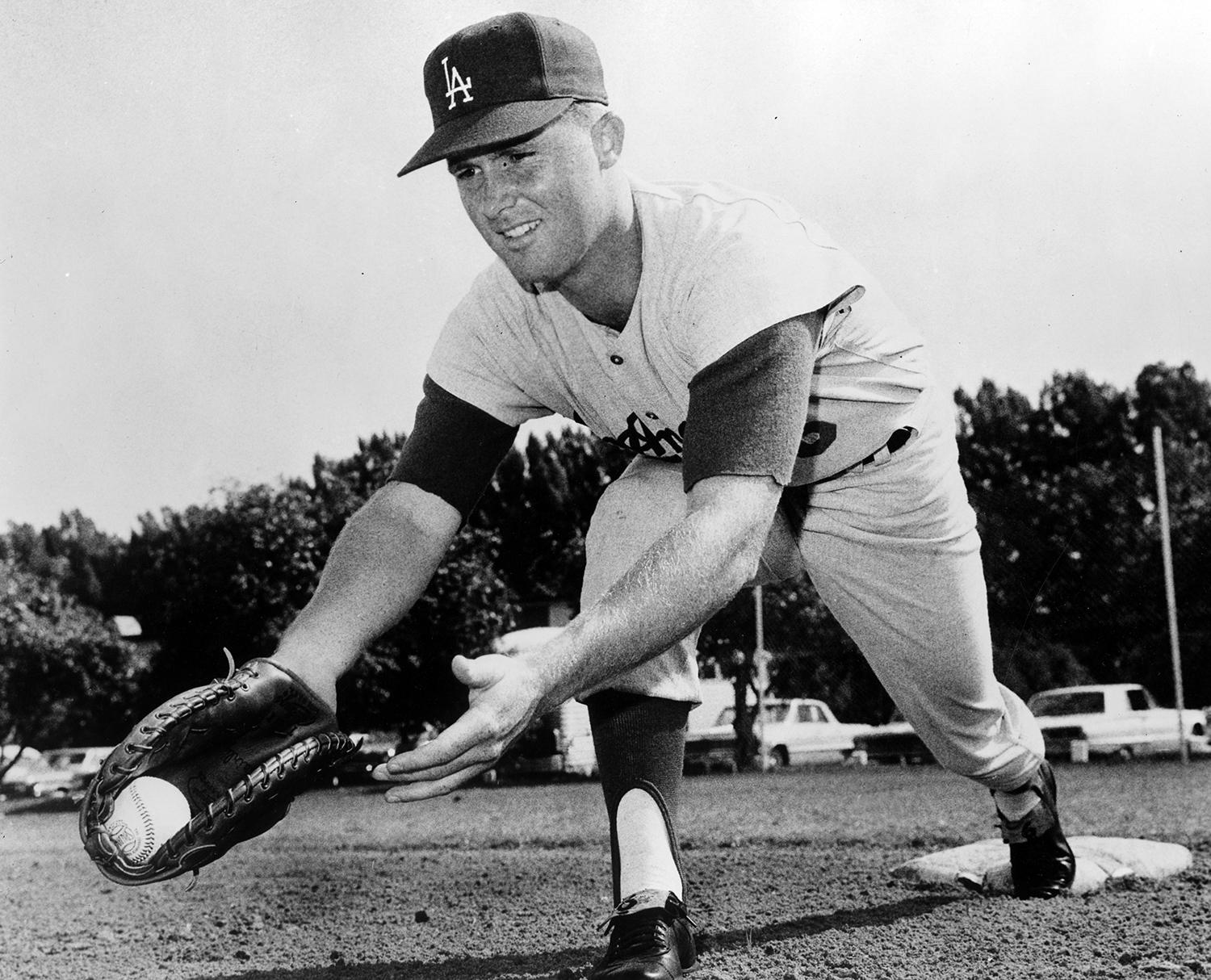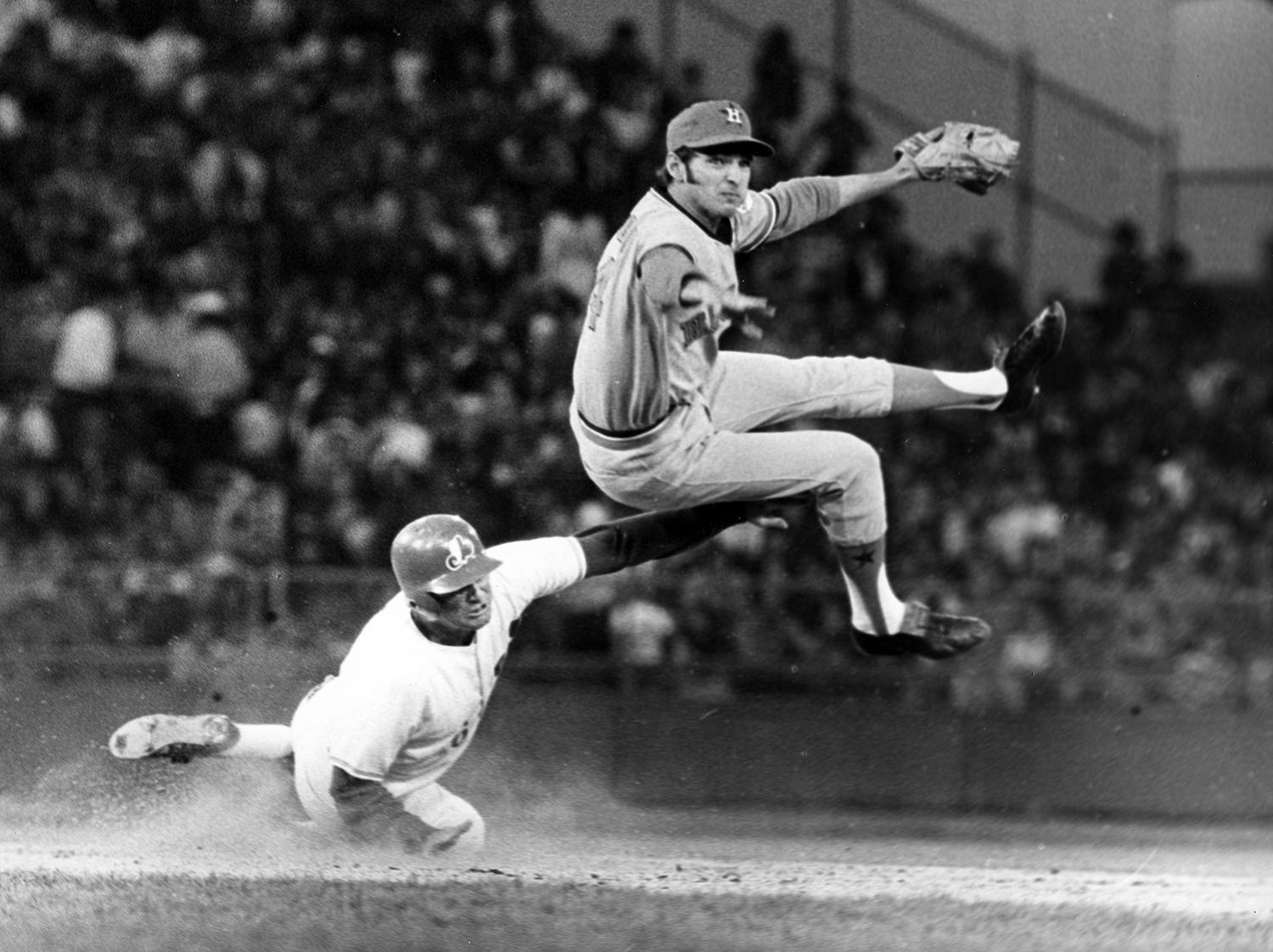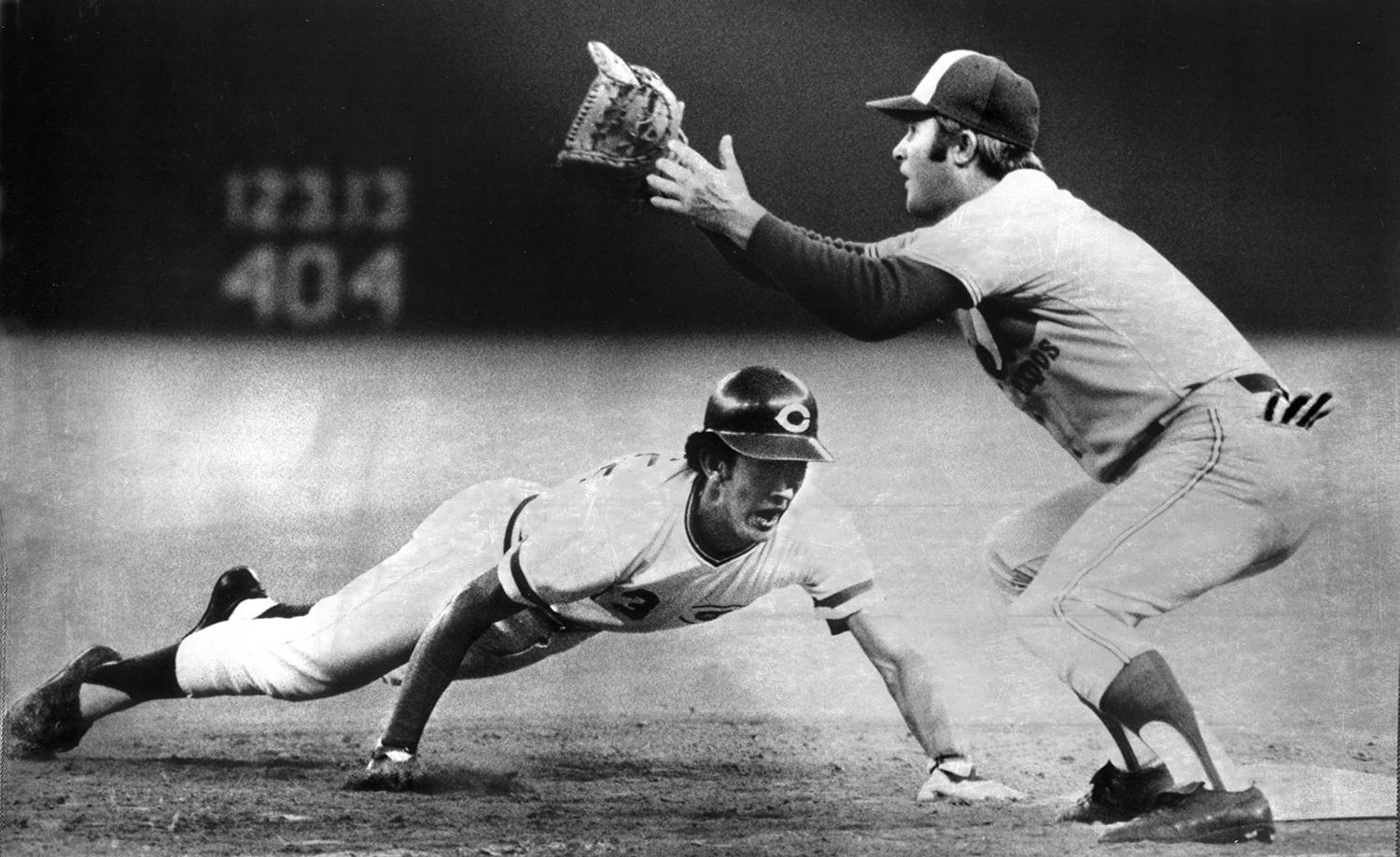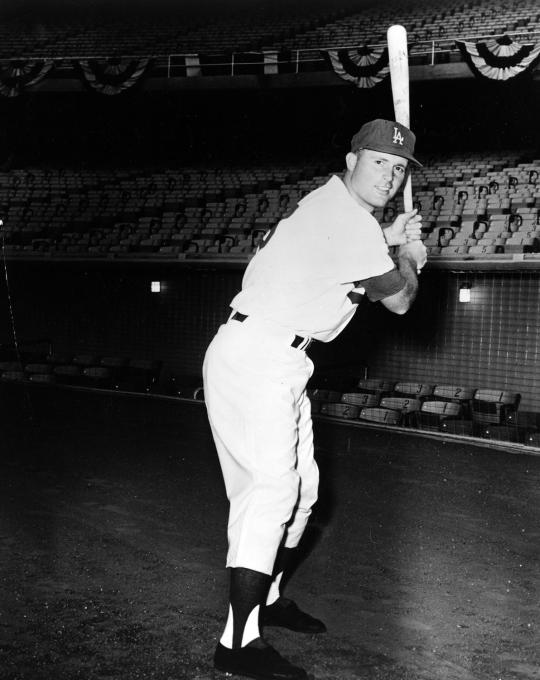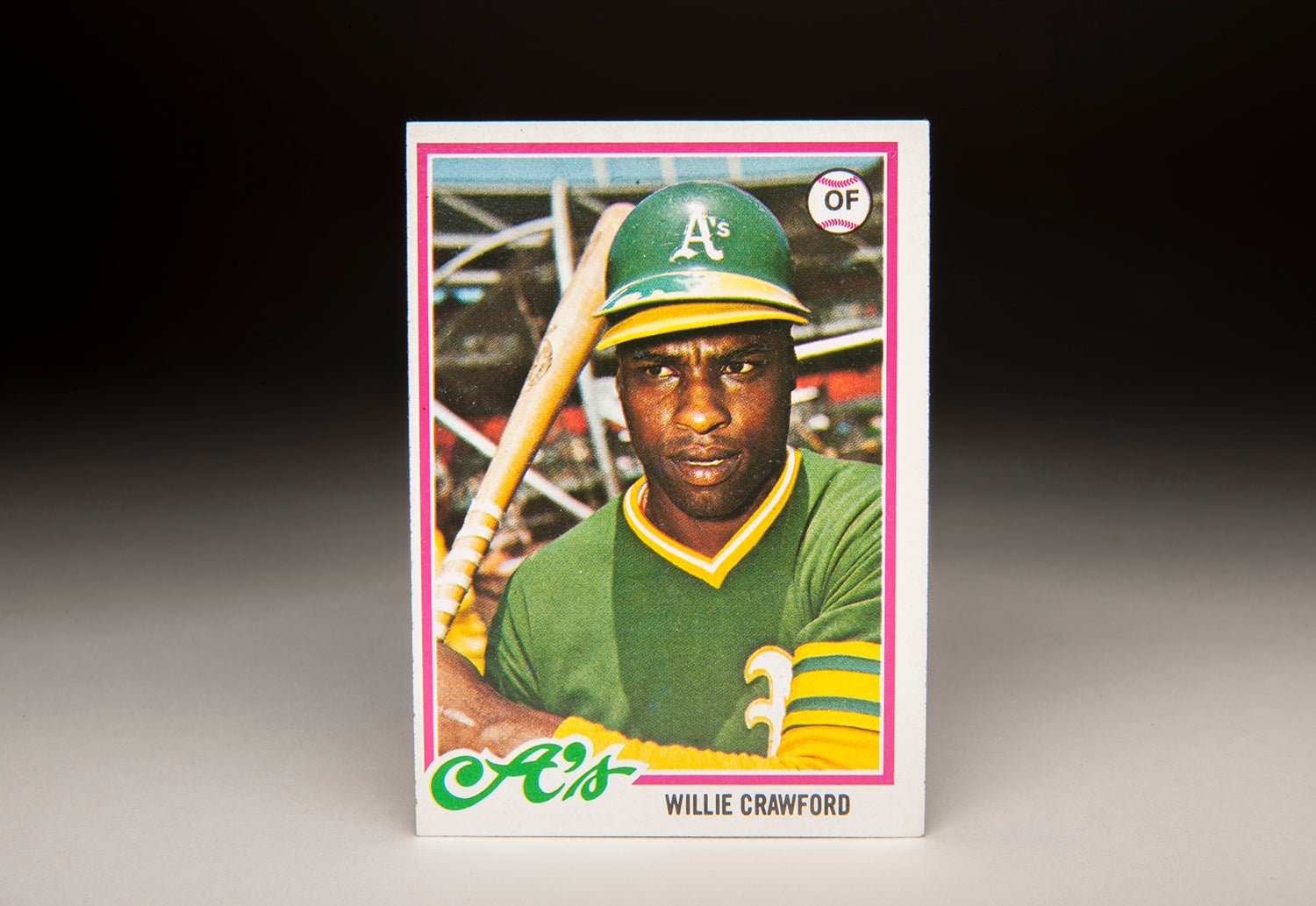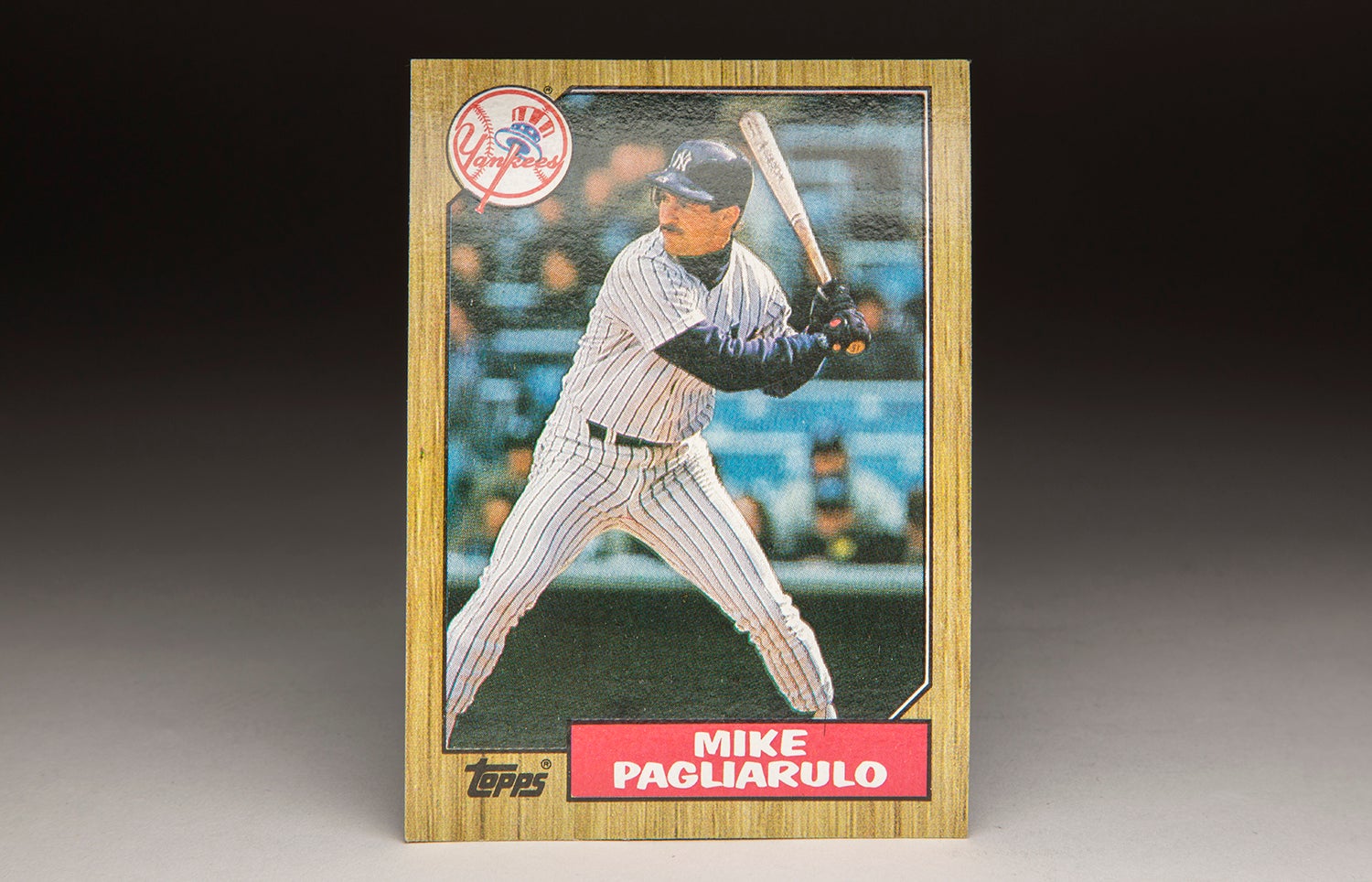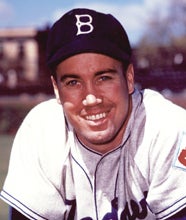- Home
- Our Stories
- #CardCorner: 1967 Topps Ron Fairly
#CardCorner: 1967 Topps Ron Fairly
Hall of Fame staffers are also baseball fans and love to share their stories. Here is a fan's perspective from Cooperstown.
For the first time since 1988, the Los Angeles Dodgers are playing in the World Series. That was 29 years ago, so there isn’t a single player on the current team that had any affiliation with the team back then. More pertinently, many of the current Dodgers weren’t even born by the time that the Dodgers finished off the Oakland A’s in 1988.
When we think about Dodgers World Series heroes, names like Hershiser, Koufax, Drysdale, and Wills come to mind. There’s also another name, a lesser-known player, who enters my thoughts. He was not a star, but might be more accurately described as a baseball foot soldier – one who was critical to his teams’ success.
Ron Fairly batted .266 for his career, couldn’t run fast enough to be measured by a speed dial, and never hit as many as 20 home runs in a season. He was never the best player on his team, never even close. Short and somewhat stocky, he could also look a little pudgy in a uniform. But if you interpret any of these traits as a sign that Fairly was a poor player, you would be mistaken. Ron Fairly was a consistent and durable performer who became one of the most disciplined hitters of the 1960s. He never struck out more than 72 times in a season, almost always drew more walks than strikeouts, and compiled an on-base percentage of .360 in an era when pitchers dominated the game.
Hall of Fame Membership
There is no simpler, and more essential, way to demonstrate your support than to sign on as a Museum Member.
Splitting his time between the outfield and first base, Fairly became a key contributor to several great Los Angeles Dodgers teams of the 1960s. He was especially good in World Series play. In 20 of those October games, he batted an even .300 with two home runs and a .525 slugging percentage, helping the Dodgers to three world championships. Make no mistake, Mr. Fairly could play the game – and help his team win.
Of all the Topps cards that depict him as a Dodger, my favorite is the one that came out 50 years ago. The 1967 card represents the innocence of baseball in the 1960s. Taken on a sunny day during Spring Training in Vero Beach, Fla., the photo shows Fairly smiling for the camera and seemingly have a good time, even though he is clearly posing for the shot. Fairly might be pretending to catch the ball, but the smile looks genuine. And why not? Who wouldn’t enjoy himself on a warm, spring day while getting ready to play a game that he presumably loves to play?
I also like the Fairly card because of the puffy blue windbreaker that he is wearing under his Dodgers jersey. This was the preferred style of the day: The windbreaker under the uniform. Players used to do this all the time, especially during Spring Training. They may have thought this was a good way to lose some weight during the early days of the spring. Players of the 1960s tended not to work out very much during the winter, thereby putting on some pounds of padding, and forcing themselves to find ways to shed the weight. A windbreaker and a flannel uniform under the hot Florida sun could result in the melting of a few pounds.
In his amateur days, back in the mid-1950s, Fairly was slim enough to play center field for USC. A star collegiate player, he drew the attention of several major league teams. He received offers from the Chicago White Sox and New York Yankees, but he took a lesser amount of money to sign with the Dodgers, in part because he preferred to stay near his home in Southern California. All of 18, Fairly started his pro career in Class A ball, but received a midseason promotion to Triple-A, where he continued to hit well. The Dodgers had no contractual obligation to bring him up, but his hitting so impressed team officials that they promoted him in September. Remarkably, the teenaged Fairly held his own, batting .283 with two home runs in just over 50 at-bats.
Fairly’s arrival did not come without some tension. The Dodgers used him in right field, where Carl Furillo had long since established himself as a stalwart. Furillo did not welcome Fairly with open arms, instead informing the rookie that he had no intention of handing right field over – at least not yet. Furillo felt that he still something left to offer, and made that point very clear to Fairly.
Still, Fairly wowed the Dodgers in that brief trial, so much so that they kept him on the big league roster for all of 1959, a year in which the Dodgers won the National League pennant. Furillo warmed up to Fairly, giving him advice on how to play right field at the different ballparks in the National League, including the strange corrugated fence at Philadelphia’s Connie Mack Stadium. Furillo also gave Fairly advice on hitting.
The larger dose of playing time in ’59 exposed some of Fairly’s flaws, particularly his vulnerability to breaking pitches. After a good start to the season, he slumped, finishing at .238 with only four home runs in 244 at-bats. In the World Series, he appeared in six games and received three at-bats, but did not pick up a hit. In the grand scheme, that mattered little. The Dodgers upended the Chicago White Sox in six games, giving Fairly his first World Series ring.
After the World Series, Fairly’s career received a jolt when he learned that he would have to spend a six-month stint in the U.S. Army Reserves. As a result, Fairly missed almost all of Spring Training. Not ready to start the season with Los Angeles, the Dodgers sent him back to Triple-A Spokane so that he could play himself back into baseball condition. He remained at Triple-A for the entire minor league season, before joining the Dodgers in mid-September. In 14 late-season games, Fairly batted only .105, an exasperating finish to a season that was full of frustration.
In 1961, Fairly would experience a new beginning, albeit one with a shaky start. Even with Furillo retired, the Dodgers’ outfield remained crowded with talent, including Duke Snider, Wally Moon, Tommy Davis and Willie Davis. Fairly started the season on the bench, but an injury to Gil Hodges created an opening at first base. Dodgers manager Walter Alston asked Fairly if he could play the position. Even though Fairly had never played first base professionally, he told Alston that he could handle the position and received the start that night.
The opportunity to play first base, while still filling in at all three outfield spots, opened up the door for more playing time. Fairly appeared in 111 games, hitting 10 home runs while batting .322. His disciplined approach to hitting impressed the Dodgers’ brass. He struck out only 22 times while drawing 48 walks. That was a walk-to-strikeout ratio of 2-1, almost unheard for any player, but especially a young hitter in his early 20s.
In 1962, Fairly moved into the Dodgers’ starting lineup. Alston used him mostly at first base, but occasionally placed him in the outfield, where he spelled the Davises and the slugging Frank “Hondo” Howard. Fairly did not hit as well as he had in 1961, but still managed a .278 batting average, 75 walks, and a .278 batting average. With an OPS of .811, Fairly ranked third on the Dodgers, behind only Tommy Davis and Howard.
In 1963, the Dodgers brought in former Yankee Bill “Moose” Skowron to platoon with Fairly at first base. While Fairly would have preferred playing every day, he actually played more games in ’63 because of his ability to handle the outfield. Appearing in 152 games, Fairly batted .271 with 12 home runs. It was not a great season, but it was good enough for a loaded Dodgers team that claimed the National League pennant.
The World Series created a set of mixed circumstances. With the Yankees featuring so much left-handed pitching, the lefty-hitting Fairly started only one game and compiled four plate appearances, drawing three walks. The good news came in the form of Dodger domination; the Dodgers swept the Series in four games, giving Fairly his second world championship ring.
In 1964, Fairly played exclusively at first base. His offensive production remained solid, if unspectacular, but also reflected an era in which pitching dominated the game. Dodger Stadium also made life difficult for Dodgers hitters, suppressing their offensive numbers because of the high mound and the way that fly balls tended to die in the outfield, rather than carry.
In 1965, the Dodgers moved Fairly back to the outfield so that they could make room for young first baseman Wes Parker, a wizard with the glove at the position. Fairly put up his typical numbers, with a batting average in the .270s and 76 walks, but really came of age in the postseason. Facing the talented pitching staff of the Minnesota Twins, Fairly batted .379 with two home runs and an OPS of 1.069. His hitting became somewhat overshadowed by the pitching of Sandy Koufax, Don Drysdale, and Claude Osteen, but the Dodgers would not have won the Series without the Herculean efforts of Fairly. Of his three world championships, this one clearly meant the most.
Despite missing some time due to injury, Fairly put up another good season in 1966, the Dodgers again reaching the World Series, only to lose to Baltimore. Then came the downturn of 1967 and ’68. Fairly’s numbers plummeted. Fairly believed that the Dodgers’ decision to lengthen the grass at Dodger Stadium and thereby slow down the speed of batted grounders had an effect on his hitting. The difficult hitting conditions of 1968, the Year of the Pitcher, did not help matters, either.
After a slow start to the 1969 season, the Dodgers decided to move on. Concerned about their declining outfielder/first baseman, they sent him and utility infielder Paul Popovich to the expansion Montreal Expos for a package of outfielder Manny Mota and infielder Maury Wills.
To put it mildly, Fairly hated the trade. He was leaving Southern California and a franchise with a history of winning to join an expansion team that seemed destined to lose 100 games. The cold weather of Montreal also gave Fairly fits.
While the trade discouraged Fairly, his on-the-field performance didn’t suffer for it. He continued to play hard – and efficiently. Employed as a combination first baseman and outfielder by manager Gene Mauch, Fairly hit .289 with 12 home runs over the balance of the season.
In 1970, Mauch used Fairly as a platoon first baseman. He again did more than solid work, batting .288 with a career-best on-base percentage of .402. The next season, Fairly’s playing time increased, but his home run and on-base percentage figures both fell off. Maintaining his regular role over the next two seasons, Fairly bounced back with better offensive numbers, culminating with his career-best season of 1973. That summer, Fairly drew 88 walks and struck out only 33 times (a remarkable ratio that seemed like something out of the 1930s), while lifting his OPS to .880. For the first time in his career, he made the All-Star team, a nice reward for a 34-year-old veteran whom many assumed was past his prime.
For a player who didn’t like the cold weather of Montreal, Fairly had a hard time showing his displeasure. He also drew praise from his manager, Gene Mauch, who liked to tell his new players, “Just watch Ron Fairly and do what he does.” The laudatory words were seconded by Paul Richards, the general manager of the Atlanta Braves, in an interview with Ed Rumill of the Christian Science Monitor. “There isn’t a ballclub in this league that couldn’t help itself by acquiring that fellow. He’s all professional – at everything.”
When it came to doing little things, like advancing a baserunner with a long fly ball, or executing the 3-6-3 double play at first base, few players could match Fairly’s fundamental prowess.
It was not until 1974 that Fairly started to show major decline in his game. Limited to 101 games, he batted only .245, his worst batting average since 1968. After the season, the Expos decided to retool with youth, trading the veteran outfielder/first baseman to St. Louis for two minor leaguers.
The Cardinals used Fairly as a kind of utility player, spotting him at first base and the outfield corners. He showed little power (seven home runs), but hit at a .301 clip, making him a valuable role player for manager Red Schoendienst.
After a sluggish performance for most of 1976 (including a homerless stretch of 110 at-bats), Fairly found himself on the move again. The Cardinals sold him in September, sending him to the Oakland A’s for a small sum of cash. Making a run at the American League West title, the A’s hoped that Fairly’s veteran bat could lift them to the postseason. Fairly hit only .239 but did show some power and a continuing penchant for drawing walks. Unfortunately, the A’s fell short of the playoffs, just two and a half games behind the Kansas City Royals.
In the spring of ’77, Fairly again found a new home. The A’s traded him to the expansion Toronto Blue Jays for cash and a minor league infielder. Fairly emerged as one of the bright spots for the first-year Jays. Used mostly as a DH, he hit 19 home runs and compiled an .827 OPS. In July, he became the Blue Jays’ first selection to the All-Star team. He also became the first (and only player) to make the All-Star team for both Canadian franchises.
While Fairly played well for the Jays, he was 38 years old, hardly the ideal age for a fledgling expansion team. So that winter, Toronto traded him to the California Angels for two young position players, Butch Alberts and Pat Kelly. Shortly after Fairly joined the Angels, one of his former teammates, by now an Angels broadcaster, marveled at the veteran’s staying power.
“That swing has been the same since the first day I saw him,” Don Drysdale told the Los Angeles Times. “He’s got a classic swing.”
Fairly’s swing remained the same, but his bat speed and power had left him. Playing mostly as a first baseman and DH, Fairly batted only .217 with scant power for the Angels in 1978.
Now 39, Fairly initially planned to report to the Angels’ spring camp in 1979. Then, just before the start of Spring Training, Angels owner Gene Autry approached Fairly with an intriguing offer. The Cowboy planned to give him a three-year deal to announce Angels games and also do some work for local TV station, KTLA, a station that Autry owned. Fairly weighed the offer against the one year remaining on his playing contract. Fairly also considered the option of managing, something he had expressed an interest in doing since the mid-1970s. Ultimately, Fairly opted for the security of the long-term broadcasting deal – and a new career path.
Although he left the playing field without fanfare, Fairly compiled an impressive resume of 21 seasons in the big leagues. By the time he called it quits, he had totaled 215 home runs and 1,015 walks. He had also made two All-Star teams. Not bad for the guy who was supposedly too slow, too short, too whatever to make an impact on the major leagues.
Fairly’s broadcasting career would last just as long as his playing days. He started with the Angels before joining the San Francisco Giants. His time with San Francisco was difficult; he had replaced Hank Greenwald, a legendary broadcaster, thereby creating the inevitable comparison between the two. “Anybody who was came in was going to catch hell,” Fairly told Steve Kettmann of the San Francisco Chronicle. “Anybody. They could have had Walter Cronkite come in, and he would have been under the gun.”
Some Giants fans also regarded Fairly as a Dodger – the hated Dodgers, that is – even though he had stopped playing for the franchise a decade and a half earlier. Greenwald did eventually return to the Giants’ booth, allowing him and Fairly to work together, and smoothing over the tension with some San Francisco fans.
Fairly then joined the Seattle Mariners, where he gained a higher level of popularity with the fan base. He also became friends with manager Lou Piniella, often driving the skipper home across the I-90 Bridge after games. As he said in an interview with the Seattle Times, those drives represented some of Fairly’s best memories in Seattle, “listening to Lou rant and rave driving across the bridge. A few times, I thought I was going to lose my dashboard.”
Fairly retired from the booth in 2006, but returned to the Mariners in 2011 as a fill-in for the late broadcasting legend, Dave Niehaus. Now retired – this time for good – Fairly is said to be enjoying life in Palm Desert, where he spends much of his time playing golf and “puttering around the house.”
I imagine he enjoys looking at those three World Series rings, too.
Bruce Markusen is the manager of digital and outreach learning at the National Baseball Hall of Fame



